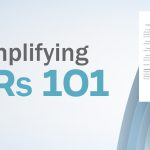Transfer of Underlying Basis – Part Two
Click here to read Part one
B. Filing Requirements
1. No need for a new application or fee
When you ask to transfer the underlying basis, you usually don’t need a new adjustment application or a filing fee. As was said above, though, if you want to switch to an INA 245(i) adjustment, you must pay an extra $1,000 and fill out Form I-485, Supplement A.
2. Request Must Be Made in Writing
The person who wants to change their basis must ask USCIS in writing to move their pending adjustment application from one basis to another.
During the adjustment interview, for example, if an applicant asks verbally to transfer the basis of a pending adjustment application, the applicant should sign and date a written statement to that effect. The officer should put the signed statement into the record of proceeding. The interview could then go on without any more delays as long as the applicant was still able to fit into the new classification right away.
C. Thoughts on the Petition
Before deciding on an adjustment application, USCIS may let the applicant move a pending adjustment application to a different petition or basis, even if the petition that will be used as the new basis for the pending adjustment application has been approved or is still pending, as long as specific requirements are met.
At any given time, an application for adjustment can only be based on one petition. The person applying for the adjustment must make it clear in writing which petition will be the new basis for the application. Several steps are needed to ensure that the petition that is the new basis for the pending adjustment application is correctly matched with the pending adjustment application.
If concurrent filing is allowed, transfer applicants are usually told to: • Submit the new petition (with the correct filing fee and signature) along with a signed letter asking that his or her pending adjustment application be moved to the new petition. Include a cover sheet with the words “REQUEST FOR TRANSFER OF PENDING FORM I-485 (CASE #) TO ENCLOSE PETITION” written in colored paper.
• Put a copy of the receipt notice for the adjustment application with the new petition.
• Include proof that you are eligible to be an immigrant in the new category to back up the transfer request to a new eligibility basis. There is no need to fill out a new application and pay a new fee.
If concurrent filing is not allowed, transfer applicants are usually told to wait until the new petition is approved before submitting a signed letter asking that the pending adjustment application be transferred, along with the other documents mentioned above.

Once an applicant asks to move a pending adjustment application from one basis to another, and if that request is granted, the adjustment application is no longer supported by the original petition. Even if the petition is approved, this rule still applies. The transfer request must be made before the adjustment application is decided so USCIS has enough time to match the replacement petition with the pending adjustment application. If a transfer request comes in after the application for an adjustment has been decided, the officer has to say no.
1. An approved petition to an approved petition
The person who will benefit from an approved petition who has a pending adjustment application can replace the approved petition with a different approved petition.
2. Petition Approved to a Petition in Process
In some cases, the person whose petition was approved but whose application for an adjustment was still pending can replace the approved petition with a pending petition as the new basis for the pending adjustment application. If the petition is approved before the adjustment application is filed (concurrent filing), the transfer cannot happen and should be denied.
3. From a “pending” petition to a “approved” one
An applicant for an adjustment who has also filed and is waiting for an immigrant visa petition can use an already approved petition as the basis for the pending adjustment application instead of the pending petition.
4. Pending Petition to a Pending Petition
An applicant for an adjustment who has also filed and is waiting for a petition can ask to move the adjustment application to another pending petition as long as the new basis allows the adjustment application to be filed before the underlying petition is approved.
D. Provisions for portability
The portability provisions of the American Competitiveness in the Twenty-First Century Act (AC21) allow certain adjustment applicants with approved employment-based immigrant visa petitions in the 1st, 2nd, and 3rd preference categories to change jobs and employers if the adjustment application has been pending for 180 days or more, as long as the applicant’s new job offer is in the same or a similar occupational classification as the job for which the petition was filed. Applicants for adjustment of status are not eligible for portability if their approved immigrant visa petitions are based on being a person with extraordinary abilities or a noncitizen for whom USCIS has waived the job offer and labor certification requirements in the national interest.
If an employment-based applicant wants to move the adjustment application to a different employment-based category based on a new Form I-140, the applicant can’t use the portability provisions if they apply until at least 180 days after making the transfer request. The applicant’s new job offer must be in the same or a similar occupational classification as the job for which the petition was originally filed. When it comes to portability eligibility, transferring the basis of the adjustment application resets the clock for how long it takes to decide on the application.

E. Decision on Request to Move
If the transfer request is granted, the applicant can’t take back the request or ask to move the adjustment application to a third basis later unless the transfer is between the first three employment-based categories.
F. Adjustment Applications from Derivative Beneficiaries
To transfer an adjustment application for a derivative beneficiary, the main adjustment applicant must still be eligible at the time of the transfer request, and the relationship between the main applicant and the dependent must still be there. If either the eligibility of the principal or the relationship changes, the derivative’s application cannot be moved to a new basis. Also, if the principal moves his or her adjustment application to a basis that doesn’t allow derivatives, the derivative loses the right to an adjustment of status at the time of the transfer, and the derivative’s adjustment application must be denied.
When a derivative’s principal is still eligible for adjustment, and there is still a relationship between the principal and the derivative, the derivative can ask for the adjustment application to be moved from one basis to another. The transfer doesn’t have to be to another derivative category. For example, an applicant who meets all the other requirements could switch from applying for adjustment as the dependent spouse of the sibling of a U.S. citizen to applying for adjustment as a principal applicant under an employment-based category.








